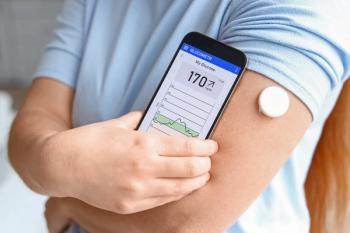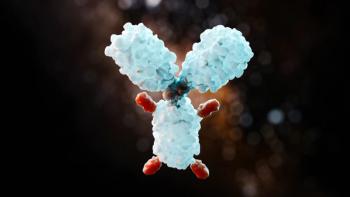
Understand Tofersen, the First FDA-Approved Drug Targeted to Slow Disease Progression in SOD1-Mutated ALS
Pharmacists play a key role in optimizing drug therapy according to the most updated guidelines, educating patients or prescribers, and monitoring therapeutic outcomes.
Overview of ALS with Mutated SOD1 Gene
Amyotrophic lateral sclerosis (ALS) is an incurable and fatal neurodegenerative disease attributed to the progressive loss of upper and lower motor neurons in the motor cortex, brainstem, and spinal cord.1 Since the early 1990s, over 200 mutations in the superoxide dismutase 1 (SOD1) gene have been identified as genetic causes linked to familial ALS (FALS), making up approximately 20% of FALS cases.2,3 Earlier this year, through the accelerated approval pathways, the FDA approved tofersen (Qalsody; Biogen), the first treatment indicated for ALS associated with a mutated SOD1 gene.4
Pathophysiology
ALS associated with mutations in the SOD1 gene (SOD1-ALS) is a rare genetic form of ALS and is considered a leading cause of FALS.2 The SOD1 gene’s primary function is to reduce oxidative stress by initiating the dismutation of superoxide radicals to yield hydrogen peroxide and oxygen.2 SOD1 mutations have ubiquitin-positive inclusions within the SOD1 protein itself, resulting in reduced activity and an accumulation of toxic molecules.2 This can ultimately lead to neuronal and glial damage, as well as a decrease in upper and lower motor function.2 Symptoms of ALS include sialorrhea (drooling), pseudobulbar affect (excessive laughing or crying, or involuntary emotional expression), fatigue, insomnia, depression, or anxiety.5
Disease burden
The National ALS Registry’s most updated report on the prevalence of ALS in the United States assessed the public health burden and identified over 20,000 cases of ALS in 2018, with an overall estimate of 9.1 per 100,000 persons.6 The majority of patients with ALS were found to only have a survival rate of approximately 2 to 4 years from symptom onset.7 Knowledge gaps still exist with respect to data on female cases, under-diagnosis, misdiagnosis, and racial disparities.6
Current Standard of Care
Currently, there is no cure, definitive biomarker, or diagnostic test for SOD1-ALS. The mainstay of SOD1-ALS management is symptomatic management and palliative care.5,6,8 Measuring concentration of SOD1 protein in cerebrospinal fluid (CSF) and plasma neurofilament light chain (NfL), a marker of axonal damage, has shown promise in determining disease progression.6,9 Symptom management options include botulinum toxin type B (BTxB), low-dose radiation therapy to salivary glands, anticholinergic agents for medically refractory sialorrhea, dextromethorphan/quinidine (Nuedexta; Otsuka) for symptoms of pseudobulbar affect, and riluzole (Rilutek; Sanofi) for fatigue.5 According to the American Academy of Neurology guidelines for ALS, there is a lack of clinical data regarding SOD1-ALS treatment and a considerable need for high-quality studies to provide more confident recommendations.5
New Drug Approval
Despite the lack of treatment options and clinical data, tofersen was recently approved as the first drug targeted towards slowing disease progression. This offers patients with SOD1-ALS another opportunity to manage their health in addition to their supportive care therapies.
Mechanism of Action
Tofersen is an antisense oligonucleotide that functions by binding to SOD1 messenger RNA (mRNA) to reduce toxic SOD1 protein synthesis, resulting in SOD1 degradation.10 This novel antisense oligonucleotide drug, although currently undergoing extensive investigation, has shown potential to slow SOD1-ALS disease progression and ultimately improve patients’ quality of life.
Clinical Data
The approval of tofersen was supported by 12-month integrated results from the phase 3 VALOR clinical trial and the open-label extension (OLE) comparing the efficacy of tofersen early initiation with delayed initiation.10 This study was a 28-week randomized, double-blinded, placebo-controlled study focusing on the efficacy of tofersen in patients with weakness attributed to SOD1-ALS.10 A total of 108 participants were randomized to receive 3 loading doses, followed by 5 maintenance doses of either tofersen 100 mg/15 mL intrathecally or placebo for 24 weeks, with concomitant riluzole and/or edaravone (Raxicava; Mitubishi Tanabe) permitted.
Seventy-two participants received tofersen and 36 received placebo. The protocol further divided the participants into “faster-progressing” and “slower-progressing” subgroups. Sixty participants who had a slow vital capacity (SVC) greater than or equal to 65% of predicted value and met the prognostic enrichment criteria for rapid disease progression were sorted into the modified intention to treat, faster-progressing subgroup. Forty-eight participants who had an SVC greater than or equal to 50% of predicted value and did not meet enrichment criteria were sorted into the nonmodified intention to treat, slower-progression subgroup.9
At baseline, 62% of participants were on concomitant riluzole and 8% on edaravone.9 The overall mean Amyotrophic Lateral Sclerosis Functional Rating Scale-Revised (ALSFRS-R) total score was 36.9 and 37.3 in the tofersen and placebo groups, respectively. The ALSFRS-R score is a physical functional rating scale that scores 12 domains (speech, swallowing, handwriting, walking, breathing, etc.) from 4 (complete function) to 0 (complete loss of function), with a maximum total score of 48 and a minimum total score of 0. The overall concentration of NfL in the plasma was 110.4 pg/mL and 89.7 pg/mL in the tofersen and placebo groups, respectively. The overall percentage of predicted SVC was 82.1% and 85.1% in the tofersen and placebo groups, respectively.9
The primary clinical analysis was the change in baseline in the ALSFRS-R total score.9 Secondary endpoints included change from baseline in total concentration of SOD1 protein in CSF, change from baseline in plasma NfL, percentage of the predicted SVC, and handheld dynamometry (HHD) megascore.9
The change in baseline in ALSFRS-R score was -6.98 and -8.14 points in the tofersen and placebo groups respectively (difference, 1.2 points; 95% CI, -3.2 to 5.5; P = 0.97).9 This difference was not found to be statistically significant and therefore all subsequent endpoint differences were not considered significant. Overall, participants on tofersen experienced less decline in ALSFRS-R scores from baseline, a greater reduction in concentration of SOD1 protein in CSF and plasma NfL, and improved percentages of predicted SVC and HHD megascore. Since the results were not statistically significant, caution is advised when interpreting the data.9
After completion of the study, participants had the opportunity to enroll in a 3- to 7-year OLE study, which is still ongoing.9 A total of 95 participants—63 from the tofersen group and 32 from the placebo group—enrolled and remained unaware of their previous trial group assignment. The interim analysis report at week 52 showed a change in ALSFRS-R score of -6.0 and -9.5 in the early-start and placebo-delayed groups, respectively (difference, 3.5 points; 95% CI, 0.4-6.7). The change in percentage of predicted SVC from baseline was -9.4% and -18.6% for early-start and placebo-delayed groups, respectively (difference, 9.2 percentage points; 95% CI, 1.7-16.6). The change in HHD megascore from baseline was -0.17 for the early-start participants and -0.45 for the placebo-delayed participants (difference, 0.28; 95% CI, 0.05-0.52). The current results demonstrate that an earlier initiation versus a placebo-delayed initiation can potentially result in greater reduction of disease progression and improvement in symptom management.9
Adverse Effects and Safety
The adverse effects were generally associated with ALS disease progression, known adverse effects of lumbar punctures, or comorbid conditions.9 The most common adverse effects were headache, falls, procedure pain, or pain in the arms, legs, or back. Approximately 7% of the participants who received tofersen experienced serious neurologic effects, including myelitis, meningitis, lumbar radiculopathy, increased intracranial pressure, and papilledema.9
Role of the Pharmacist
Due to the progressive nature of ALS, there are many clinical challenges that require collaboration with pharmacists, nurses, dieticians, neurologists, and respiratory, physical, and occupational therapists.7 However, a study by Jefferies and Bromber found that, with respect to ALS, no clinics were known to have a clinical pharmacist onsite. Patients are often prescribed a variety of prescriptions and OTC medications to manage their ALS symptoms, while also taking medications for other chronic medical conditions they may have. Pharmacists play a key role in optimizing drug therapy according to the most updated guidelines, educating patients or prescribers, and monitoring therapeutic outcomes. Pharmacists can provide comprehensive management of medications by assessing medication adherence and safety. They can assess safety not only with prescriptions, but also with OTC medications. This study shows a need to increase awareness of the benefits of having a clinical pharmacist perform pharmacy services, especially in neurology clinics treating patients with ALS.7
Conclusion
SOD1-ALS is a complex neurodegenerative disorder and, despite its rarity, represents a substantial burden with limited treatment options and poor survival prognosis. Treatment strategies for ALS have remained stagnant; however, due to efforts to increase awareness, recent breakthroughs in medicine have been approved. As a result, there is an even greater need for pharmacist inclusion in the interprofessional team for ALS management and high-quality clinical studies to deliver the most appropriate standard of care to patients.
References:
1. Miller RG, Jackson CE, Kasarskis EJ, et al. Practice parameter update: the care of the patient with amyotrophic lateral sclerosis: drug, nutritional, and respiratory therapies (an evidence-based review). Neurology. 2009;73(15):1218-1226. doi:10.1212/WNL.0b013e3181bc014
2. Arnold FJ, Nguyen AD, Bedlack RS, Bennett CL, La Spada AR. Intercellular transmission of pathogenic proteins in ALS: exploring the pathogenic wave. Neurobiol Dis. 2023;184:106218. doi:10.1016/j.nbd.2023.106218
3. Berdyński M, Miszta P, Safranow K, et al. SOD1 mutations associated with amyotrophic lateral sclerosis analysis of variant severity. Sci Rep. 2022;12:103. doi:10.1038/s41598-021-03891-8
4. FDA approves treatment of amyotrophic lateral sclerosis associated with a mutation in the SOD1 gene. FDA. April 25, 2023. Accessed October 8, 2023.
5. Miller RG, Jackson CE, Kasarskis EJ, et al. Practice parameter update: the care of the patient with amyotrophic lateral sclerosis: multidisciplinary care, symptoms management, and cognitive/behavioral impairment (an evidence-based review). Neurology. 2009;73(15)1227-1223. doi:10.1212/WNL.0b013e3181bc01a4
6. Mehta P, Raymond J, Zhang Y, et al. Prevalence of amyotrophic lateral sclerosis in the United States. Amyotroph Lateral Scler Frontotemporal Degener. 2023;0:1-7. doi:10.1080/21678421.2023.2245858
7. Jefferies KA, Bromberg MB. The role of a clinical pharmacist in a multidisciplinary amyotrophic lateral sclerosis clinic. Amyotroph Lateral Scler. 2012;13(2):233-236. doi:10.3109/17482968.2011.636449.
8. Suzuki N, Nishiyama A, Warita H, Aoki M. Genetics of amyotrophic lateral sclerosis: seeking therapeutic targets in the era of gene therapy. J Hum Genet. 2023;68:131–152. doi:10.1038/s10038-022-01055-8
9. Miller TM, Cudkowicz ME, Genge A, et al. Trial of antisense oligonucleotide tofersen for SOD1 ALS. N Engl J Med. 2022;387:e1099-e1110. doi:10.1056/NEJMoa2204705
10. Qalsody. Prescribing information. Biogen Inc; 2023. Accessed October 8, 2023.
Newsletter
Stay informed on drug updates, treatment guidelines, and pharmacy practice trends—subscribe to Pharmacy Times for weekly clinical insights.
















































































































































































































